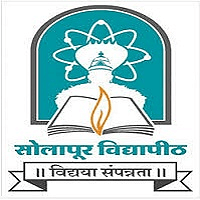Introduction about Master of Architecture (MArch) ?
The Master of
Architecture (M Arch) from the top university is a professional graduate
degree program designed for individuals who aspire to become licensed
architects and pursue careers in the field of architecture. This advanced
degree provides comprehensive education and training in architectural design,
theory, technology, and practice, preparing students to address complex
challenges in the built environment.
Here's an
introduction to the Master of Architecture degree:
1.
Professional
Accreditation: The M Arch
degree is typically accredited by professional architectural organizations,
such as the National Architectural Accrediting Board (NAAB) in the United
States or the Royal Institute of British Architects (RIBA) in the United
Kingdom. Completion of an accredited MArch program is a prerequisite for
licensure as an architect in many countries.
2.
Advanced
Study: The M Arch program
builds upon foundational knowledge and skills acquired during undergraduate
studies in architecture or related fields. It offers advanced coursework and
studio-based learning experiences that allow students to deepen their
understanding of architectural principles, design processes, and technical
aspects of building construction.
3.
Design
Studio: A central component
of the M Arch curriculum is the design studio, where students engage in hands-on
design projects under the guidance of experienced faculty members and
practicing architects. Studio courses provide opportunities for creative
exploration, critical thinking, collaboration, and the development of design
solutions for real-world architectural challenges.
4.
Interdisciplinary
Approach: Many M Arch
programs embrace an interdisciplinary approach to architectural education,
encouraging students to explore connections between architecture and other
fields such as urban planning, landscape architecture, environmental design,
engineering, sustainability, social sciences, and the arts.
5.
Technology
and Innovation: M Arch
students learn to utilize advanced digital tools, computational techniques,
Building Information Modeling (BIM), and parametric design software to enhance
their design processes, visualization skills, and project management
capabilities. They also study emerging technologies, materials, and
construction methods that shape contemporary architectural practice.
6.
Architectural
Theory and History: M Arch
programs often include coursework in architectural theory, history, and
criticism, providing students with a broad understanding of architectural
traditions, movements, cultural contexts, and theoretical frameworks that
inform architectural practice and discourse.
7.
Professional
Practice: M Arch students
gain knowledge of professional practice standards, ethics, regulations, codes,
and legal aspects of architecture. They learn about project management,
construction administration, sustainability principles, building codes, zoning
ordinances, and client relations, preparing them for the realities of
architectural practice.
8.
Research
and Innovation: Some M Arch
programs offer opportunities for research, thesis projects, or design research
studios where students can investigate specific topics, theories, or
methodologies within the field of architecture and contribute to the
advancement of architectural knowledge and innovation.
9.
Licensure
and Career Pathways:
Graduates of M Arch programs are eligible to pursue licensure as architects and
embark on diverse career pathways in architecture firms, design studios,
construction companies, government agencies, academia, research institutions,
and nonprofit organizations. They may specialize in areas such as residential
design, commercial architecture, urban design, sustainable design, historic
preservation, healthcare facilities, or digital fabrication.
10.
Overall,
the Master of Architecture degree provides aspiring architects with the
knowledge, skills, and professional credentials needed to excel in the dynamic
and multifaceted field of architecture, shaping the built environment and
contributing to the betterment of society through innovative design and
thoughtful urban planning.
What is eligibility for Master of Architecture
(MArch) ?
The eligibility
requirements for a Master of Architecture (M Arch) program can vary depending on
the institution offering the program and the specific country or region in
which it is located. However, here are some common eligibility criteria you
might encounter when applying for MArch program:
·
Undergraduate
Degree: Most M Arch programs
require applicants to have a bachelor's degree from an accredited institution.
The degree may need to be in architecture, architectural studies, environmental
design, or a related field. Some programs may also accept applicants with
undergraduate degrees in non-related fields but may require them to complete
prerequisite coursework.
·
Portfolio: Applicants are often required to submit a
portfolio of their creative work as part of the application process. The
portfolio should showcase examples of the applicant's design skills,
creativity, and visual communication abilities. It may include drawings,
sketches, renderings, models, digital design work, and examples of previous
design projects.
·
Transcripts: Applicants are typically required to
submit official transcripts from all post-secondary institutions attended,
including undergraduate and any graduate coursework. These transcripts provide
evidence of academic achievement and prerequisite coursework completed.
·
Letters
of Recommendation: M Arch
programs often require letters of recommendation from individuals who can speak
to the applicant's academic abilities, design skills, work ethic, and potential
for success in graduate-level architectural study. These letters are usually
written by professors, architects, employers, or other professionals familiar
with the applicant's work.
·
Statement
of Purpose: Applicants are
typically required to submit a written statement of purpose that outlines their
academic and professional background, career goals, reasons for pursuing an
M Arch degree, and how the program aligns with their interests and aspirations.
The statement of purpose helps admissions committees assess the applicant's fit
for the program and commitment to the field of architecture.
·
Standardized
Test Scores (optional):
Some M Arch programs may require applicants to submit standardized test scores,
such as the Graduate Record Examination (GRE) or the Graduate Aptitude Test in
Engineering (GATE). However, many programs do not require standardized test
scores for admission.
·
Interview
(optional): Some M Arch
programs may require applicants to participate in an interview as part of the
admissions process. The interview allows faculty members to assess the
applicant's communication skills, intellectual curiosity, design thinking, and
potential for success in the program.
What is admission process for Master of
Architecture (MArch) ?
The admission
process for the best college in India Master of Architecture (MArch)
program typically involves several steps, which may vary slightly depending on
the institution and the specific program. Here's a general overview of the
typical admission process for an MArch program:
v Research and Exploration: Before applying to M Arch programs,
research different institutions and their MArch offerings to find programs that
align with your academic interests, career goals, and personal preferences.
Consider factors such as faculty expertise, curriculum focus, facilities,
location, accreditation, and reputation.
v Application Submission: Begin the application process by
submitting an application form through the institution's admissions website. Be
sure to review the application deadlines and requirements carefully, as they
can vary from program to program.
v Transcripts: Request official transcripts from all
post-secondary institutions you have attended, including undergraduate and any
graduate coursework. These transcripts should be sent directly to the
admissions office of the M Arch program to which you are applying.
v Portfolio Submission: Prepare a portfolio of your creative work
to submit as part of your application. The portfolio should showcase examples
of your design skills, creativity, visual communication abilities, and previous
design projects. Follow the specific guidelines provided by each program
regarding portfolio format, content, and submission instructions.
v Letters of Recommendation: Request letters of recommendation from
individuals who can speak to your academic abilities, design skills, work
ethic, and potential for success in graduate-level architectural study. These
individuals may include professors, architects, employers, or other
professionals familiar with your work. Be sure to provide them with any
required forms or instructions for submitting letters of recommendation.
v Statement of Purpose: Write a statement of purpose that outlines
your academic and professional background, career goals, reasons for pursuing
an MArch degree, and how the program aligns with your interests and
aspirations. The statement of purpose should be well-written, concise, and
tailored to each program to which you are applying.
v Standardized Test Scores (if required): Some M Arch programs may require applicants
to submit standardized test scores, such as the Graduate Record Examination
(GRE) or the Graduate Aptitude Test in Engineering (GATE). If required,
register for the exam and have your scores sent directly to the institution. Be
sure to check the specific requirements of each program regarding standardized
testing.
v Interview (if required): Some M Arch programs may require applicants
to participate in an interview as part of the admissions process. If invited
for an interview, prepare by familiarizing yourself with the program,
practicing articulating your ideas and experiences, and being ready to discuss
your academic background, design interests, and career goals.
v Admission Decision: After submitting your application
materials, the admissions committee will review your portfolio, transcripts,
letters of recommendation, statement of purpose, standardized test scores (if
required), and any other required documents. You will receive an admission
decision from the institution within a specified timeframe.
v Enrollment and Registration: If accepted, you will receive instructions
on how to enroll in the M Arch program and register for classes. Be sure to
complete any additional requirements, such as submitting a tuition deposit or
attending orientation sessions, as specified by the institution.
v Financial Aid and Scholarships: Explore financial aid options,
scholarships, grants, assistantships, or fellowships available to MArch
students. Submit any required financial aid applications and documents by the
specified deadlines to be considered for funding opportunities.
What is syllabus for Master of Architecture (MArch)
?
The syllabus for a
Master of Architecture (M Arch) program can vary significantly depending on the
institution offering the program, the specific focus or concentration within
the M Arch curriculum, and the requirements for professional accreditation by
relevant architectural organizations. However, here's a general overview of the
types of courses and topics you might encounter in an M Arch program:
§ Design Studio: The core of the M Arch curriculum is
typically the design studio, where students engage in hands-on design projects
under the guidance of experienced faculty members and practicing architects.
Studio courses provide opportunities for creative exploration, critical
thinking, problem-solving, and the development of design solutions for
real-world architectural challenges. Studios may cover various scales of
design, from small-scale interventions to large urban projects, and may focus
on different typologies such as residential, commercial, institutional,
cultural, or sustainable design.
§ Architectural Theory and History: M Arch students study architectural theory,
history, and criticism to gain a deeper understanding of the cultural, social,
historical, and theoretical contexts of architecture. Courses may explore
various architectural movements, styles, traditions, and critical perspectives,
providing a foundation for informed design practice and discourse.
§ Technology and Building Systems: M Arch programs typically include
coursework in building technology, construction methods, structural systems,
environmental systems, and sustainable design strategies. Students learn to
integrate technology and building systems into their design proposals,
understand the principles of building performance, and address environmental
considerations such as energy efficiency, daylighting, ventilation, and
material selection.
§ Digital Design and Representation: M Arch students learn to utilize digital
tools, software, and technologies for architectural design, visualization,
modeling, simulation, and fabrication. Courses may cover topics such as
computer-aided design (CAD), Building Information Modeling (BIM), parametric
design, digital fabrication, rendering, animation, virtual reality (VR), and
augmented reality (AR).
§ Professional Practice and Ethics: M Arch programs often include coursework in
professional practice, ethics, regulations, codes, and legal aspects of
architecture. Students learn about project management, contract administration,
client relations, zoning ordinances, building codes, licensure requirements,
and professional responsibilities, preparing them for the realities of
architectural practice.
§ Urban Design and Planning: Some M Arch programs offer coursework in
urban design, planning, and urbanism, focusing on the design of cities,
neighborhoods, public spaces, and landscapes. Students explore issues such as
urban growth, density, transportation, sustainability, social equity, and
community engagement, and develop design strategies for creating livable,
resilient, and inclusive urban environments.
§ Research and Thesis: Many M Arch programs culminate in a
research-based thesis project or design thesis, where students investigate a
specific topic, question, or problem within the field of architecture and
develop a comprehensive design proposal or scholarly work. The thesis project
allows students to demonstrate their research skills, critical thinking
abilities, design expertise, and contribution to the advancement of
architectural knowledge.
§ Electives and Specializations: M Arch students may have the opportunity to
take elective courses or pursue specializations within their program to tailor
their education to their individual interests, career goals, and emerging
trends in architecture. Electives may cover topics such as advanced design
techniques, specialized building typologies, interdisciplinary studies, digital
fabrication, sustainable design strategies, or urban interventions.
§ Internship or Professional Experience
(optional): Some M Arch
programs offer opportunities for students to gain practical experience through
internships, co-op programs, or professional practice courses. These
experiences provide valuable insights into the day-to-day operations of
architecture firms, construction sites, or related industries and enhance
students' understanding of professional practice.
§ Exhibitions and Reviews: Throughout the M Arch program, students
participate in design critiques, reviews, presentations, and exhibitions where
they present their work to faculty, peers, and external critics for feedback,
evaluation, and discussion. These opportunities for peer review and critical
discourse foster a collaborative learning environment and help students refine
their design skills and ideas.
§ Keep in mind that the specific syllabus and
course offerings of an M Arch program can vary from one institution to another,
so it's important to research the curriculum of individual programs to find one
that aligns with your interests, career goals, and aspirations within the field
of architecture.
What are scopes after Master of
Architecture (MArch) ?
After
completing a Master of Architecture (M Arch) degree from the top affordable college in India , graduates have a wide range of career opportunities
available to them in various sectors of the architecture and design industry.
Here are some potential career paths and scopes for MArch graduates:
§ Licensed Architect: Graduates of M Arch programs are typically
eligible to pursue licensure as architects in their respective jurisdictions,
provided they meet the requirements for licensure, which often include
completing a professional degree program, gaining relevant work experience, and
passing the Architect Registration Examination (ARE) or equivalent licensing
exam. Licensed architects can work independently or in collaboration with other
professionals to design, plan, and oversee the construction of buildings and structures.
§ Architectural Designer: M Arch graduates may work as architectural
designers in architecture firms, design studios, engineering firms,
construction companies, or multidisciplinary design practices. As architectural
designers, they collaborate with architects and other team members to develop
design concepts, produce drawings and specifications, create digital models,
and contribute to the design development process for various building projects.
§ Urban Designer or Planner: Some M Arch graduates pursue careers in
urban design, urban planning, or city planning, focusing on the design and
development of cities, neighborhoods, public spaces, and landscapes. They may
work for government agencies, consulting firms, nonprofit organizations, or
urban design studios, addressing issues such as urban growth, transportation,
sustainability, social equity, and community development.
§ Sustainability Consultant: M Arch graduates with expertise in
sustainable design, green building practices, and environmental stewardship may
work as sustainability consultants or specialists, advising clients on
strategies to reduce the environmental impact of buildings and promote energy
efficiency, renewable energy, water conservation, and healthy indoor
environments.
§ Building Information Modeling (BIM)
Manager: M Arch graduates
with proficiency in Building Information Modeling (BIM) software and
technologies may work as BIM managers or coordinators, overseeing the
implementation of BIM processes, standards, and protocols on architectural
projects. They collaborate with project teams to manage digital models,
coordinate design information, and facilitate interdisciplinary collaboration.
§ Academic or Researcher: Some M Arch graduates pursue careers in
academia, teaching architecture, design, urban planning, or related subjects at
colleges, universities, or design schools. They may also engage in research,
scholarship, or doctoral studies, investigating topics such as architectural
theory, history, technology, sustainability, or urbanism, and contributing to
the advancement of knowledge in the field.
§ Architectural Visualization Specialist: M Arch graduates with skills in digital
visualization, rendering, animation, and virtual reality (VR) may work as
architectural visualization specialists, creating compelling visualizations,
animations, and interactive experiences to communicate design concepts, present
projects to clients, and engage stakeholders in the design process.
§ Heritage Conservationist: M Arch graduates with an interest in
historic preservation, conservation, and cultural heritage may work as heritage
conservationists or preservation architects, collaborating with preservation
organizations, government agencies, or private clients to rehabilitate,
restore, and adapt historic buildings and sites for contemporary use while
preserving their architectural significance and cultural value.
§ Entrepreneur or Design Entrepreneur: Some M Arch graduates may choose to start
their own architecture firms, design studios, or creative ventures, offering
architectural services, design consultancy, or innovative solutions to clients,
communities, or industries. They may specialize in niche markets, emerging
technologies, sustainable design practices, or interdisciplinary
collaborations.
§ Community Engagement and Advocacy: M Arch graduates may engage in
community-based design initiatives, advocacy campaigns, or social impact
projects that address pressing social, environmental, or urban challenges and
empower marginalized communities through participatory design processes,
community workshops, and grassroots activism.
§ These are just a few examples of the diverse
career paths and scopes available to M Arch graduates. The field of architecture
offers numerous opportunities for creativity, innovation, collaboration, and
impact, allowing graduates to pursue rewarding careers that align with their
interests, skills, and aspirations.
About us :
Universityfindo
provides you a platform where you fulfill your dreams and takes a step forward
towards in your life . We provide you all courses with affordable fees
and safe environment . For more information contact us on our website
: universityfindo.com .












